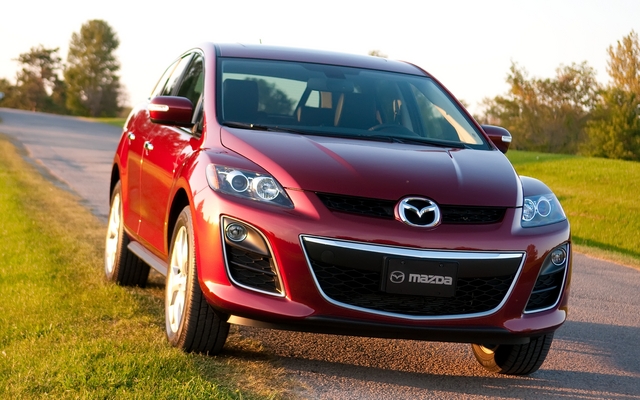2011 Mazda CX-7: Different engine, different personality!

Introduced in 2007, the Mazda CX-7 has created some tough competition in the compact SUV segment, rivaling other choice models. The CX-7 sets itself apart with dynamic style and sportiness thanks to its "zoom-zoom" heritage. You might even consider it a long-legged sports car.
Last year, a few cosmetic changes were made to the CX-7. Mazda’s new style components were added, like a larger grille featuring the "Mazda smile" (first seen on the Mazda3). They also upped the size of the Mazda emblem in front. But other than that, the CX-7 kept its super dynamic lines, thanks mostly to the steep incline of its windshield and plunging roof line. Despite the fact that it is four years old, the CX-7’s design is anything but aged.
Simple choices
If you’re falling under the spell of the CX-7, you should know that the choices to be made on it are fairly simple. The GS and GT versions (the latter being a bit pricier) both come with a 2.3-litre turbocharged four-cylinder engine. With 244 hp and 258 lbs-ft of torque, this engine gives the CX-7 a lot more power than many of its rivals, most of which make do with a naturally aspirated four-cylinder engine. Some of these vehicles may offer as much power when equipped with a V6 though. If power is what you’re after, the CX-7 has some to spare.
This engine is equipped factory-standard with a six-speed automatic gearbox and all-wheel drive. This is an exceptional starting point for an SUV – to think that, in the past, people snubbed the CX-7 for various reasons. First, its base price was higher than the competition’s, and its turbo engine was something of a gas guzzler. Then, not everyone appreciated the engine, which was designed to be very lively.
Two engines since last year
That’s why Mazda introduced the CX-7 GS last year. This model is outfitted with a 2.5-litre four-cylinder naturally aspirated engine that produces 161 hp and the same amount of torque. This is the model I recently had the chance to test drive. Even though this engine is paired with a five-speed automatic gearbox (instead of a six-speed), it still manages to deliver some great performances, losing just 2 seconds on the 0-100 km/hr sprint. Its fuel consumption is markedly better – a full 2 litres less per 100 km than the turbocharged versions. Plus, this car will accept regular gas instead of super – another major source of savings.
The last advantage of the CX-7 GS – but not the least – is its affordable pricing. Coming in at just over $26,000, its base price is a lot closer to its competitors’. All these advantages might get you thinking that this version is perfect. Well, not quite. This drivetrain cannot be paired with all-wheel drive, and it’s frankly hard to justify buying this type of vehicle with front-wheel drive only. Thus, this is not the car for people who absolutely want all-wheel drive. The CX-7 is sure to lose customers on this point.
Inside, I appreciated the quality assembly and user-friendly dashboard. The different controls are nicely presented and easy to locate. And you won’t need to refer to the instruction manual to figure it out. The designers really emphasized the CX-7’s sport qualities by including a leather-bound steering wheel, firm and supportive seats, and metal accents here and there. While front passengers enjoy decent space, it’s a bit tighter for those in back. The plunging roof line reduces the amount of headspace available, not to mention it cuts into the cargo space too. Getting you gear in and out can be a bit of a squeeze.
Sporty driving
Once you’re out on the road, you really feel like you’re driving a car, rather than an SUV. The engineers planned it that way and did a good job pulling it off. Thanks to its turbo engine, the CX-7 has plenty of punch. The independent suspension does a good job supporting the vehicle’s vocation and effectively controls roll on corners. Of course, it can be quite firm, which some people will surely dislike. But it really boils down to personal preferences. It would be unfair to gloss over the efficiency of the all-wheel drive as it lends the CX-7 confidence in all conditions.
As for the version with the naturally aspirated engine, you still get all the CX-7’s DNA, but with a little less juice. It is nonetheless pleasant to drive and not at all anemic. It’s just a shame that it doesn’t come with all-wheel drive. That’s its main pitfall.









